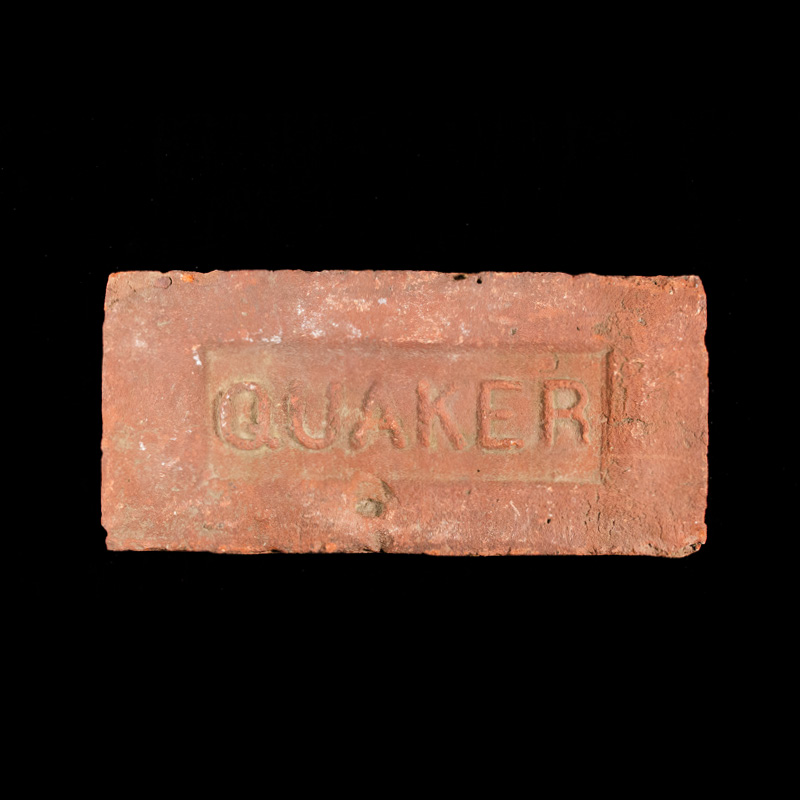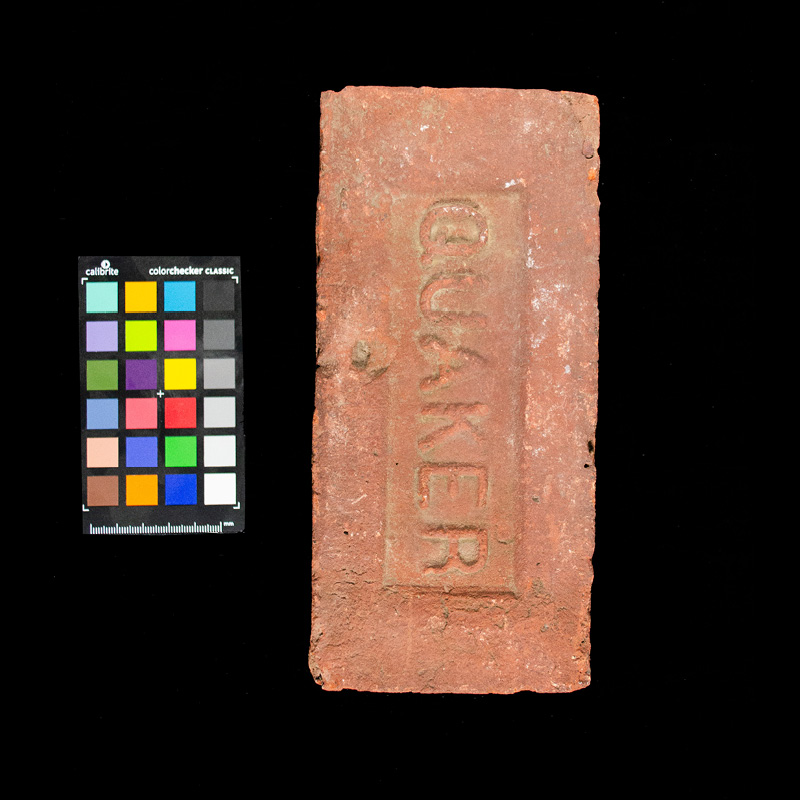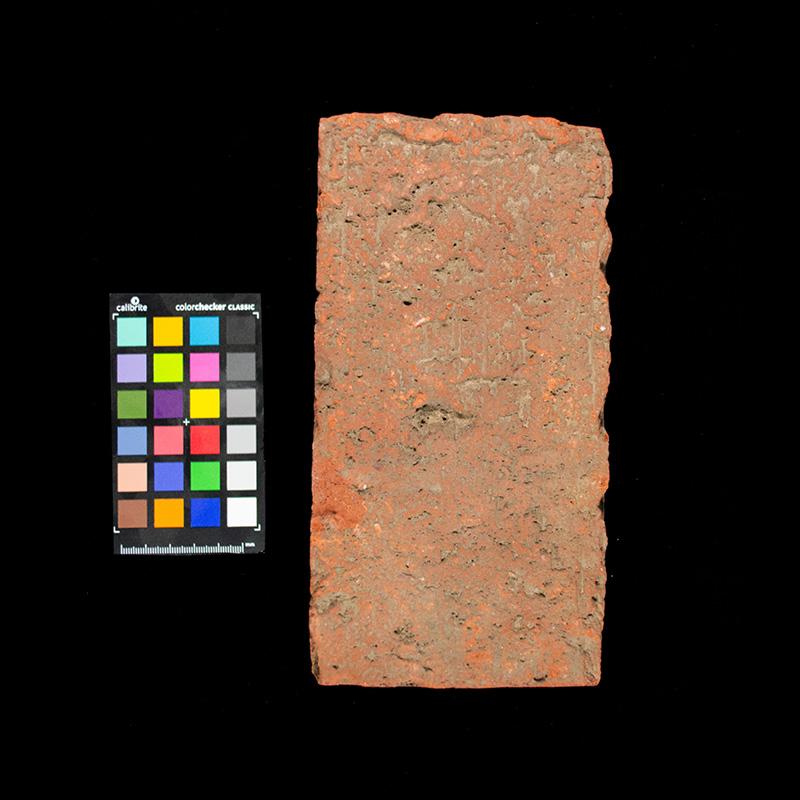Quaker Brick
Lancaster Brick Company (1919-1979), in Lancaster County, Pennsylvania. Marker can be reached from Good Drive near Parklawn Court. This marker is located along a hiking trail approximately 1/2 mile from the parking area for Noel Dorwart Park.
“Lancaster is noticeable to strangers by the preponderance of brick used in building construction. In Paid Advertisement Click on the ad for more information. Please report objectionable advertising to the Editor. most cities of its size in most parts of the United States, only the main business sections would be found to have buildings of the more permanent brick or stone construction.”
—-Dr H.M.J.Klein, 1924 Historian & Professor at F&M College
Identification and Creation
| Primary ID | BR.LABC.19XX.BRIC.01 |
|---|---|
| Collection: | Historic Building Materials Collection |
| Creation Date: |
Physical Description
| Materials: | |
|---|---|
| Dimensions: | 8.5" x 2.25" x 3.75" |
Provenance
| Building or Site: |
Lancaster Brick Company Baker Woodland site, northwest edge of Lancaster City, Pennsylvania. The Factory was operating between 1919 and 1979. [1] From de Wet, A.P., Richardson, J. & Olympia, C. Interactions of land-use history and current ecology in a recovering “urban wildland”. Urban Ecosystems 2, 237–262 (1998). https://doi.org/10.1023/A:1009584622756: Prior to 1920 most of the site was used for agriculture. Between 1920 and 1980 the site was owned by the Lancaster Brick Company and was used for clay mining and the manufacture of bricks (Horning, 1992). Clay was excavated from the southern and eastern sectors, and firing kilns, warehouses, access roads and rail-cart tracks were built in the north-central sector. Abandoned clay pits in central parts of the site were used for a major city landfill in the late 1950s and early 1960s. Residual brickmaking activity using off-site clay ceased in 1980 when Franklin & Marshall College purchased the land, and the site has been essentially unmaintained since that time. The clay mining, brickmaking and landfilling significantly altered the topography, hydrology and soils of Baker Woodlands, and it is this legacy from the period 1920–1980 that is the strongest influence on present ecology.Sources [1] Horning, Roy A., II, "The Lancaster Brick Company, 1919-1979," Journal of the Lancaster County Historical Society, 94 (no. 1, 1992), 2-32. |
|---|
Acquisiton and Rights
| Credit Line (Donor): | Architectural Conservation Lab, University of Pennsylvania |
|---|---|
| Accession year: | January 1, 1970 |
| Catalogued by: | Siqi Zhao |



